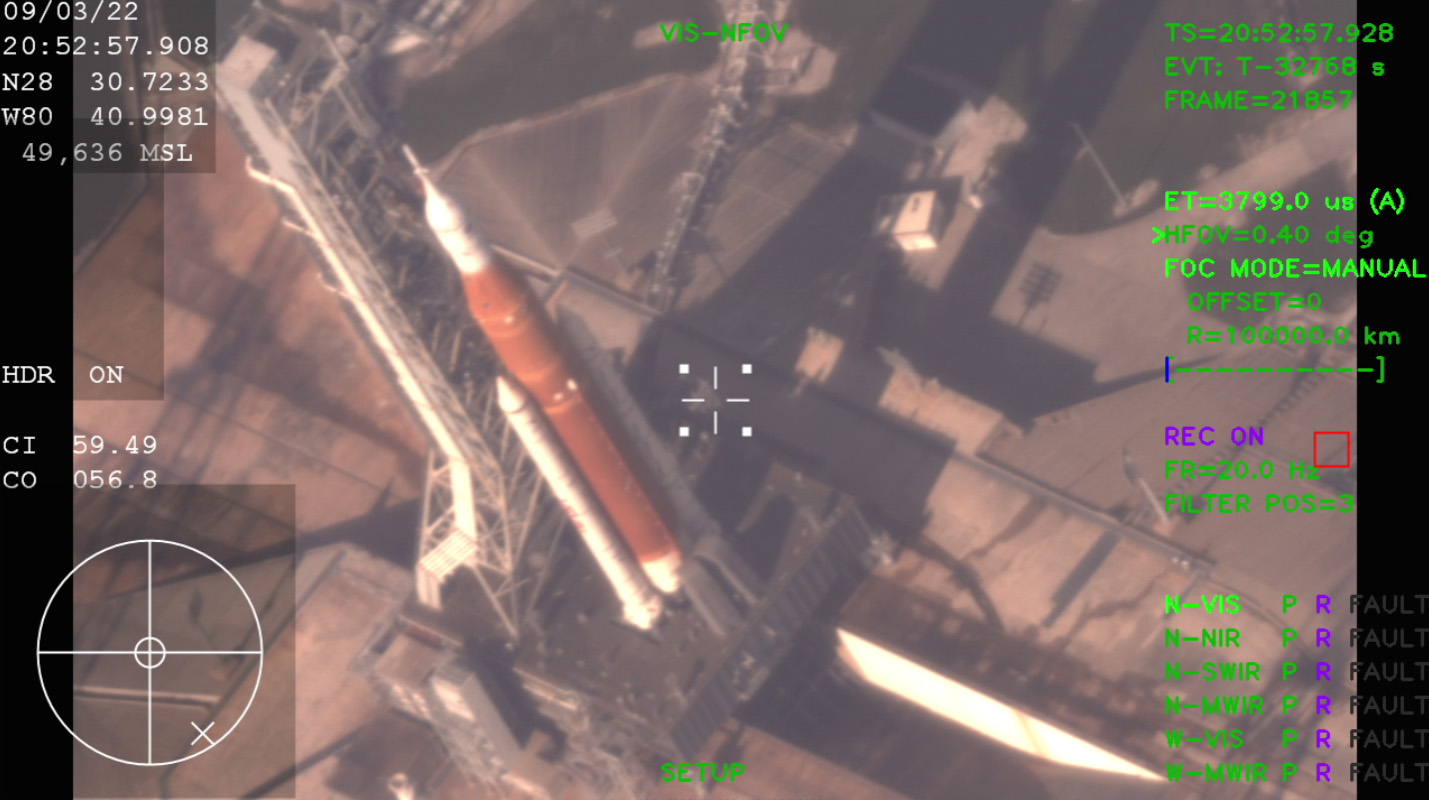SCIFLI is an essential piece of NASA’s Artemis 1 mission, the first of several moon-bound missions scheduled for this decade. SCIFLI imaged the ascent on November 16th, paying particular attention to the effect of hot plumes of expanding gas from the Space Launch System (SLS). These plumes, invisible to the naked eye, were rendered visible by SCIFLI’s infrared imagery. SCIFLI’s infrared capabilities were also key to this mission since liftoff occurred in darkness, just after 2AM EDT, making visual imagery difficult to capture. The team used SCIFLI’s newly developed technology, SAMI (SCIFLI Airborne Multi-spectral Imaging System), which was created specifically for SLS. SAMI flew on the WB-57 aircraft—which was the second most tracked aircraft in the world on flightradar24.com during the mission. Artemis I’s ascent was SAMI’s first active mission.
In addition to SAMI’s in-flight imagery, SCIFLI provided support for ground imagery collected by MARS Scientific. Imaging objectives included the same plume-induced flow separation SAMI targeted, as well as SRB (Solid Rocket Booster) separation and images of the base heat shield. In addition to infrared and visual imagery, SCIFLI helped gather telemetry data. Partnering with the Global Hawk Skyrange program, SCIFLI coordinated a modified RangeHawk that flew over the Pacific to gather telemetry during a potential satellite blackout period.

